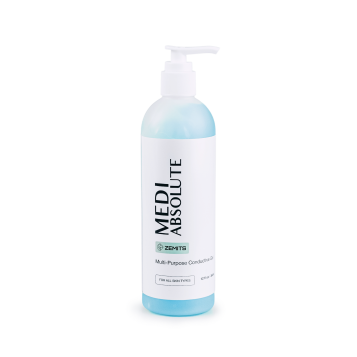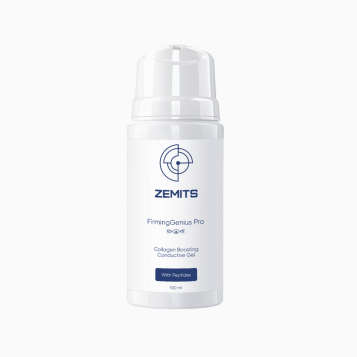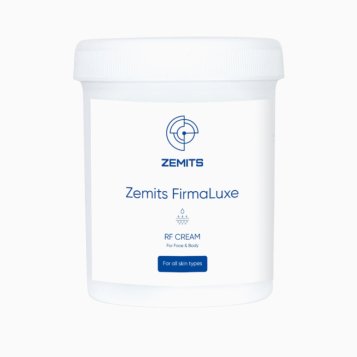- Home / Skincare / Conductive Gels
Facial & Body Ultrasonic Conductive Gels
Professional Conductive Gels
When it comes to esthetic treatments, it’s common knowledge that high-tech tools are used for these procedures. What this means is that extra care needs to be taken to ensure these procedures go as smoothly as possible, achieve maximum effectiveness, and with minimal or no discomfort to the patient.
This is where the conductive gels come in. Not only do they offer adequate skin protection, but they also help these tools work better and effectively, for the best results possible. In essence, they are a necessity.
The gel is applied to the skin before the ultrasound transducer is used. It helps to create a good acoustic contact between the transducer and the skin, which is necessary for effective transmission of the ultrasonic waves. Without the gel, the waves may be absorbed or scattered by the skin, leading to poor image quality or reduced effectiveness of the treatment.
Conductive gels are substances that allow the transmission of materials used in esthetics treatments to readily flow into and pass through the skin, improving product absorption for adequate effects on the skin cells, tissues and muscle. In order words, it works by making the skin more permeable to the emissions from the high-tech devices that are used for skin treatment and other clinical procedures.
It is important to note that, since these gels can get into the skin during treatment, their constituents should be put to mind when making a decision on which gel to choose for your spa. So, you’re not only looking for gels that will glide perfectly, you also want to use gels that have sufficient conductivity and adds value to the skin.
They also work differently as some devices require a certain type of gel to work properly. This should be factored in as well.
Some of the benefits of conductive gels includes:
- Penetration and transmission of current into the skin and muscles.
- Protection of the skin against damage and injury.
- Allows easy gliding of tools and devices against the skin.
- Contains ingredients that nourish and rejuvenates the skin.
Conductive Gel Uses
Conductive gel is often used in aesthetics and medical treatments that involve the use of electrical or ultrasonic devices. Some examples of treatments that may use conductive gel include:
- Microcurrent treatment
- RF treatment
- Ultrasonic Cavitation
- Laser treatments
- IPL treatments
- Electrocardiography (ECG or EKG).
- Electromyography (EMG).
- Transcutaneous electrical nerve stimulation (TENS).
- Ultrasound imaging.
- Ultrasound-guided injections:
Conductive Gel Ingridients
Conductive gel is typically made of a combination of water, glycerin, and salt. The specific ingredients may vary depending on the manufacturer, but most conductive gels contain these basic components.
Water is the main ingredient in conductive gel, and it helps to create a good electrical or ultrasonic contact between the skin and the device. Glycerin is a humectant that helps to moisturize the skin and improve the transmission of the signals. Salt helps to improve the conductivity of the gel and facilitate the transmission of the signals.
Other ingredients may be added to conductive gel to improve its performance or stability. For example, preservatives may be included to extend the shelf life of the gel, or thickening agents may be added to improve the consistency of the gel.
It is important to use a high-quality conductive gel that is appropriate for the specific medical procedure and the characteristics of the skin. Some gels may be more suitable for certain procedures or skin types than others, so it is important to choose the right gel for your needs.
Conductive Gel Benefits
Conductive gel has several benefits when used in medical procedures that involve the transmission of electrical or ultrasonic signals through the skin. Some of the benefits of conductive gel include:
-
Improved signal transmission: Conductive gel helps to create a good electrical or ultrasonic contact between the skin and the device, improving the transmission of the signals. This leads to better performance of the device and more accurate and reliable results.
-
Better image quality: In procedures such as ultrasound imaging, the use of conductive gel can improve the quality of the images by reducing the absorption or scattering of the ultrasonic waves by the skin.
-
More comfortable for the patient: Conductive gel is typically water-based and non-greasy, making it more comfortable for the patient to use than other types of conductive mediums.
-
Easy to clean: Conductive gel is easy to clean off the skin and does not leave any residue, making it convenient to use in medical procedures.
-
Long shelf life: Conductive gel typically has a long shelf life, making it a cost-effective and convenient option for medical procedures.
Overall, the use of conductive gel can improve the performance of medical devices and the accuracy and reliability of the results, as well as making the procedure more comfortable for the patient.
Types of Conductive Gels
- General-purpose conductive gel.
- Conductive gel with hyaluronic acid.
- Hypoallergenic conductive gel.
- Warming conductive gel.


















Connecticut, Delaware, Florida, Georgia, Hawaii, Idaho, Illinois, Indiana, Iowa, Kansas, Kentucky, Louisiana, Maine, Maryland, Massachusetts, Michigan, Minnesota, Mississippi, Missouri, Montana, Nebraska, Nevada, New Hampshire, New Jersey, New Mexico, New York, North Carolina, North Dakota, Ohio, Oklahoma, Oregon, Pennsylvania, Rhode Island, South Carolina, South Dakota, Tennessee, Texas, Utah, Vermont, Virginia, Washington, West Virginia, Wisconsin, Wyoming




















